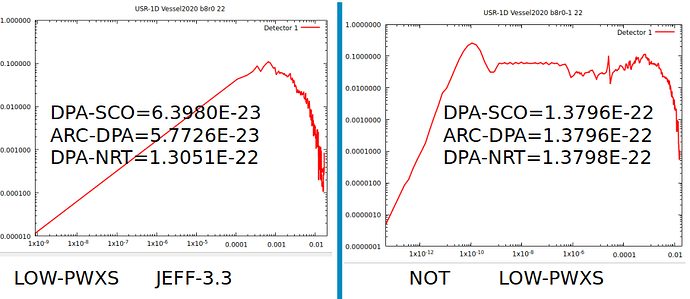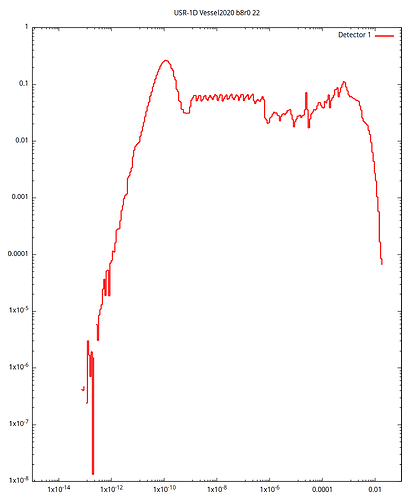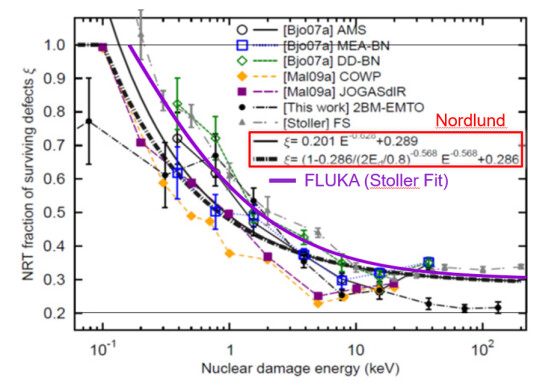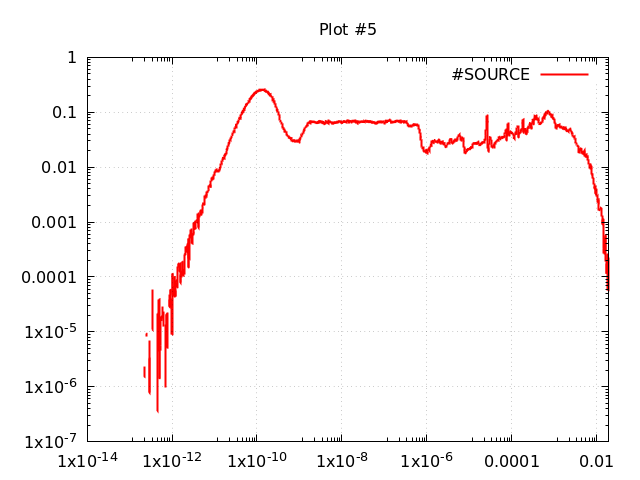Neutron Fluence
- To correct the ripples you need to sample flat in log space inside each interval at line 179.
- In the neutron fluence, the step between ~1eV to 1keV is suspicious, I would guess that the spectrum is a recombination from various measurements/simulations not properly normalized.
DPA
as far as I know DPA is not a unit that one can directly measure, its more like a “mathematical quantity” that gives you the possibility to compare the damage effect on macroscopic quantities induced by different irradiation fields/conditions.
The most accurate calculation of DPA one can make, is with Molecular Dynamic codes, counting the individual Frenkel pairs. Monte Carlo codes using condensed history and tracking down to a certain energy, do not take into account the development of a cascade after a primary knocked out atom (PKA), and use some approximate ways of calculating it.
The work of Nordlund was addressing that by measuring the effect on macroscopic quantities vs the calculated DPA-NRT for various PKA, and he made a fit on the results as a reduction factor to be applied on the DPA-NRT. The difference mainly comes from the overlapping of the various cascade branches, and its more pronounced the higher the PKA energy is.
In FLUKA:
DPA-NRT: integrates the PKA recoils above the transport threshold integrates using the NRT rules (0 up to Eth, 1 up to 2Eth, and linear above). Below the PART-THRES uses the Lindhard partition function to split between nuclear (NIEL) and electronic losses, which is then converted again to DPA-NRT using the same rule
DPA-SCO: was a invention, a pioneering work of FLUKA (long time before the ARC-DPA). In contrast to the simplistic NRT model, it was calculating the restricted recoils above damage threshold, and instead of applying a fixed efficiency of 0.8 (from NRT), its using a variable efficiency a fit as function of the PKA based on the MD simulations of Stoller, in order to take into account the recombination due to branch overlaps.
ARC-DPA: athermal recombination DPA is using the Nordlund fit, instead of the Stoller plus the discretization for 1,2 damage thresholds.
However since ALL the above including the “standard” are subject to the implementation in the MC worls, so the factor 3 you are quoting should not be used literally.
Personally I would only trust the order of magnitude of the DPA and not the exact value (not only from FLUKA but from every code), especially if one looks also on how the damage threshold is estimated and the huge variations you can find for the same material.








